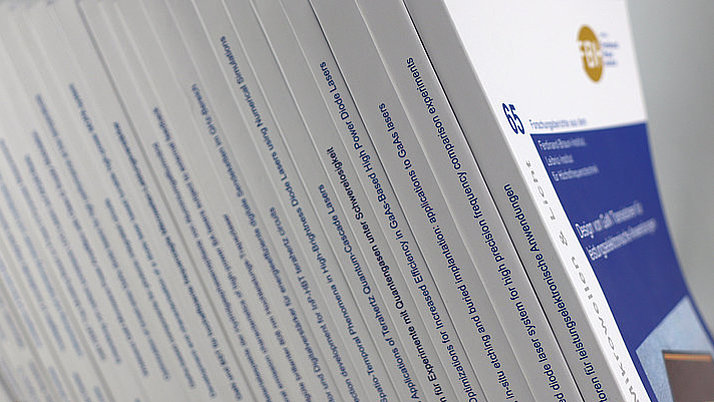Assessing the safety of new germicidal far-UVC technologies
M. Görlitz1,2, L. Justen1,2, P.J. Rochette3, M. Buonanno4, D. Welch4, N.J. Kleiman5, E. Eadie6, S. Kaidzu7, W.J. Bradshaw1,2, E. Javorsky8,9, N. Cridland10, A. Galor11, M. Guttmann12, M.C. Meinke13, J. Schleusener13, P. Jensen14, P. Söderberg15, N. Yamano16, C. Nishigori16,17, P. O'Mahoney18, D. Manstein19, R. Croft20,21, C. Cole22, F.R. de Gruijl23, P.D. Forbes24, S. Trokel25, J. Marshall26, D.J. Brenner4, D. Sliney27,28, K. Esvelt1,2
Published in:
Photochem. Photobiol., vol. 100, no. 3, pp. 501–520 (2024).
Abstract:
The COVID-19 pandemic underscored the crucial importance of enhanced in- door air quality control measures to mitigate the spread of respiratory patho- gens. Far-UVC is a type of germicidal ultraviolet technology, with wavelengths between 200 and 235 nm, that has emerged as a highly promising approach for indoor air disinfection. Due to its enhanced safety compared to conventional 254 nm upper-room germicidal systems, far-UVC allows for whole-room direct exposure of occupied spaces, potentially offering greater efficacy, since the total room air is constantly treated. While current evidence supports using far-UVC systems within existing guidelines, understanding the upper safety limit is criti- cal to maximizing its effectiveness, particularly for the acute phase of a pandemic or epidemic when greater protection may be needed. This review article sum- marizes the substantial present knowledge on far-UVC safety regarding skin and eye exposure and highlights research priorities to discern the maximum exposure levels that avoid adverse effects. We advocate for comprehensive safety studies that explore potential mechanisms of harm, generate action spectra for crucial biological effects and conduct high-dose, long-term exposure trials. Such rigor- ous scientific investigation will be key to determining safe and effective levels for far-UVC deployment in indoor environments, contributing significantly to future pandemic preparedness and response.
1 Massachusetts Institute of Technology, Media Lab, Cambridge, Massachusetts, USA
2 SecureBio, Inc., Cambridge, Massachusetts, USA
3 Centre de recherche du CHU de Québec-Université Laval, Axe Médecine Régénératrice Quebec, Quebec City, Quebec, Canada
4 Center for Radiological Research, Columbia University Medical Center, New York City, New York, USA
5 Department of Environmental Health Sciences, Mailman School of Public Health, Columbia University, New York City, New York, USA
6 Photobiology Unit, Ninewells Hospital, Dundee, UK
7 Department of Ophthalmology, Shimane University Faculty of Medicine, Izumo, Japan
8 Wyss Institute for Biologically Inspired Engineering at Harvard University, Boston, Massachusetts, USA
9 Future of Life Institute, Cambridge, Massachusetts, USA
10 Radiation, Chemicals and Environment Directorate, UK Health Security Agency, Didcot, UK
11 Miami Veterans Affairs Medical Center, University of Miami Health System Bascom Palmer Eye Institute, Miami, Florida, USA
12 Ferdinand-Braun-Institut gGmbH, Berlin, Germany
13 Department of Dermatology, Venerology and Allergology, Center of Experimental and Applied Cutaneous Physiology, Charité-Universitätsmedizin Berlin, Berlin, Germany
14 Final Approach Inc., Port Orange, Florida, USA
15 Ophthalmology, Department of Surgical Sciences, Uppsala Universitet, Uppsala, Sweden
16 Division of Dermatology, Department of Internal Related, Kobe University, Kobe, Japan
17 Japanese Red Cross Hyogo Blood Center, Kobe, Japan
18 Optical Radiation Effects, UK Health Security Agency, Chilton, UK
19 Department of Dermatology, Cutaneous Biology Research Center, Harvard Medical School, Massachusetts General Hospital, Boston, Massachusetts, USA
20 International Commission on Non-Ionizing Radiation Protection (ICNIRP), Chair, Wollongong, New South Wales, Australia
21 University of Wollongong, Wollongong, New South Wales, Australia
22 Sun & Skin Consulting LLC, New Holland, Pennsylvania, USA
23 Department of Dermatology, Universiteit Leiden, Leiden, South Holland, The Netherlands
24 Toxarus, Inc., Malvern, Pennsylvania, USA
25 Department of Ophthalmology, Columbia University Vagelos College of Physicians and Surgeons, New York City, New York, USA
26 Institute of Ophthalmology, University College London, London, UK
27 IES Photobiology Committee, Chair, Fallston, Maryland, USA
28 Consulting Medical Physicist, Fallston, Maryland, USA
Index Terms:
222 nm, biosecurity, COVID-19, far-UVC, germicidal ultraviolet, indoor air quality, pandemic preparedness, ultraviolet
© 2023 American Society for Photobiology.
Rightslink® by Copyright Clearance Center
Full version in pdf-format.


